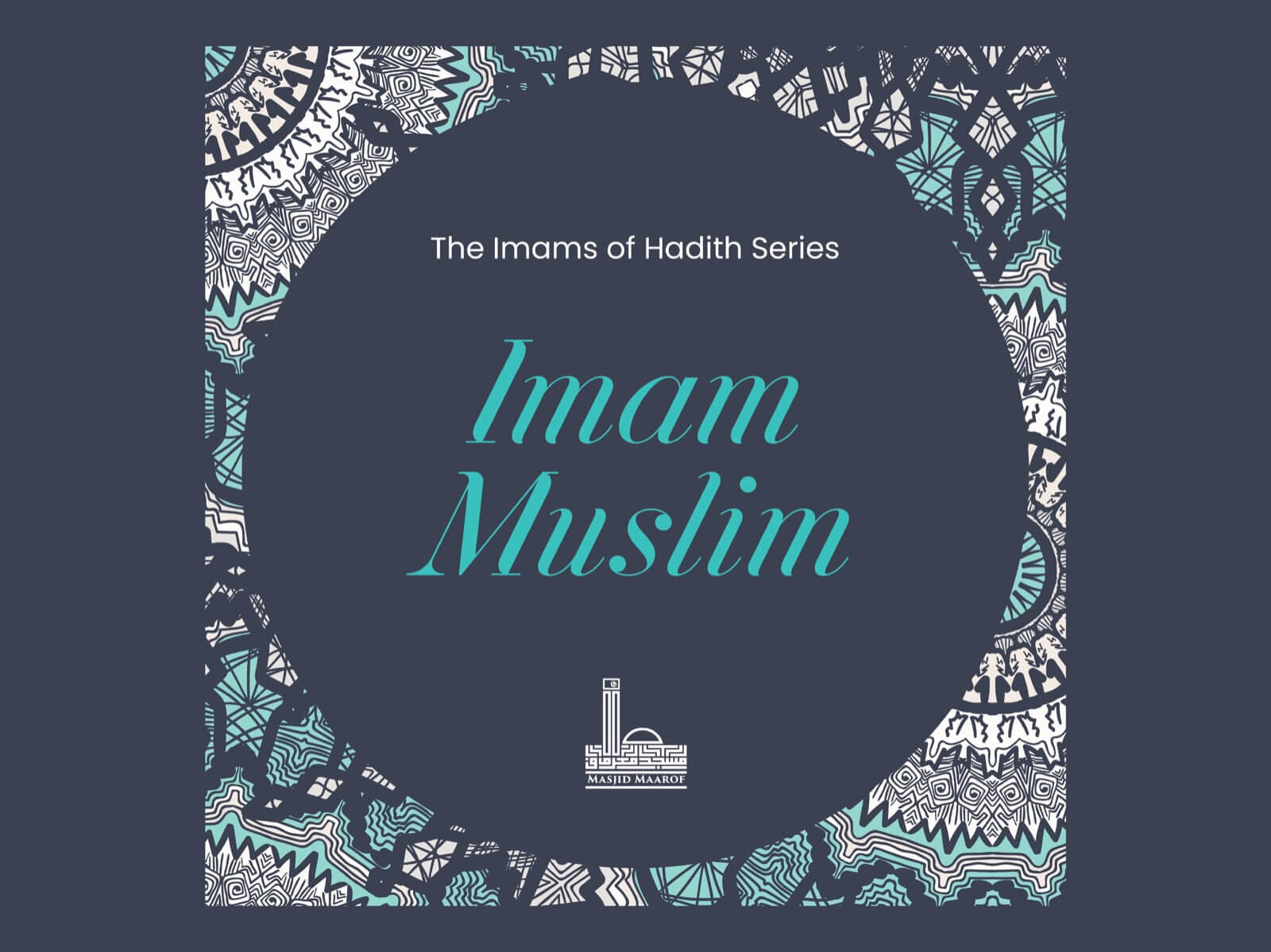The full name of Imam Muslim is Abul Husain Muslim ibn Al-Hajjaj Al-Qushairi An-Naisaburi. He belonged to the Qushair tribe of the Arabs, an offshoot of the great clan of Rabi`ah. He was born in Nishapur in AH 202/817 CE or AH 206/821 CE. His parents were religiously minded persons and as such he was brought up in a pious atmosphere. This left such an indelible impression on his mind that he spent the whole of his life as a God-fearing person and always adhered to the path of righteousness. He was in fact a righteous man of high calibre. His excellent moral character can be well judged from the simple fact that he never indulged in backbiting, a very common human failing.
Imam Muslim travelled widely to collect traditions in Arabia, Egypt, Syria, and Iraq, where he attended the lectures of some of the prominent traditionists of his time such as Ishaq ibn Rahwaih, Ahmad ibn Hanbal, `Ubaidullah Al-Qawariri, Qutaibah ibn Sa`id, `Abdullah ibn Maslamah, Harmalah ibn Yahya, and others.
Having finished his studies, he settled down at Nishapur. There he came into contact with Imam Al-Bukhari and was so much impressed by his vast knowledge of Hadith and his deep insight into it that he kept himself attached to him up to the end of Al-Bukhari’s life. He was an ardent admirer of another great teacher of Hadith, Muhammad ibn Yahya Adh-Dhuhali and attended his lectures regularly. But when the difference of opinion between Muhammad ibn Yahya and Imam Al-Bukhari, on the issue of the creation of the Qur’an, sharpened into hostility, Imam Muslim sided with Imam Al-Bukhari and abandoned Muhammad ibn Yahya altogether. He was thus a true disciple of Imam Al-Bukhari.
Imam Muslim wrote many books and treatises on Hadith, but the most important of his works is the collection entitled Al-Jami` As-Sahih. Some Hadith commentators are of the opinion that in certain respects it is the best and most authentic work on the subject. Imam Muslim took great pains in collecting 300,000 hadiths, and then after a thorough examination of them retained only 4,000, the genuineness of which is fully established.(1)
He prefixed to his compilation a very illuminating introduction, in which he specified some of the principles that he followed in the choice of his material.
Imam Muslim has to his credit many other valuable contributions to different branches of Hadith literature, and most of them retain their eminence even to the present day. Amongst these Kitab Al-Musnad Al-Kabir `ala Ar-Rijal, Al-Jami` Al-Kabir, Kitab Al-Asma’ wal-Kuna, and Kitab Al-`Ilal are very important.
Imam Muslim travelled widely to collect traditions in Arabia, Egypt, Syria, and Iraq, where he attended the lectures of some of the prominent traditionists of his time such as Ishaq ibn Rahwaih, Ahmad ibn Hanbal, `Ubaidullah Al-Qawariri, Qutaibah ibn Sa`id, `Abdullah ibn Maslamah, Harmalah ibn Yahya, and others.
Having finished his studies, he settled down at Nishapur. There he came into contact with Imam Al-Bukhari and was so much impressed by his vast knowledge of Hadith and his deep insight into it that he kept himself attached to him up to the end of Al-Bukhari’s life. He was an ardent admirer of another great teacher of Hadith, Muhammad ibn Yahya Adh-Dhuhali and attended his lectures regularly. But when the difference of opinion between Muhammad ibn Yahya and Imam Al-Bukhari, on the issue of the creation of the Qur’an, sharpened into hostility, Imam Muslim sided with Imam Al-Bukhari and abandoned Muhammad ibn Yahya altogether. He was thus a true disciple of Imam Al-Bukhari.
Imam Muslim wrote many books and treatises on Hadith, but the most important of his works is the collection entitled Al-Jami` As-Sahih. Some Hadith commentators are of the opinion that in certain respects it is the best and most authentic work on the subject. Imam Muslim took great pains in collecting 300,000 hadiths, and then after a thorough examination of them retained only 4,000, the genuineness of which is fully established.(1)
He prefixed to his compilation a very illuminating introduction, in which he specified some of the principles that he followed in the choice of his material.
Imam Muslim has to his credit many other valuable contributions to different branches of Hadith literature, and most of them retain their eminence even to the present day. Amongst these Kitab Al-Musnad Al-Kabir `ala Ar-Rijal, Al-Jami` Al-Kabir, Kitab Al-Asma’ wal-Kuna, and Kitab Al-`Ilal are very important.
Prilozi
-
131.7 KB Pregleda: 1,088





